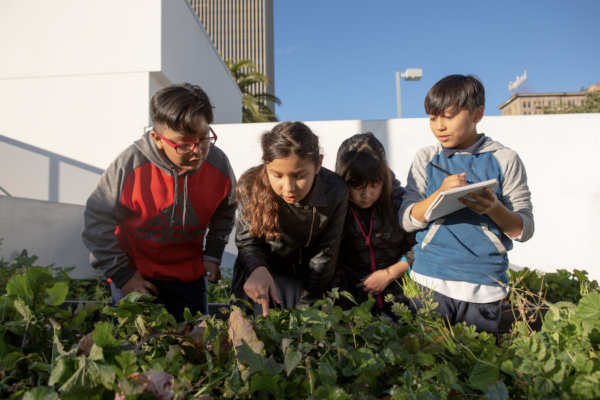As school districts and states scramble to use federal Covid relief aid to help students recover academically this summer, they’ll need to address a core challenge of summer learning: Too often students don’t show up.
RAND Corporation researchers evaluated the impact of voluntary, in-person summer programs in five urban districts in 2013 and 2014. They found that 20 percent of students never attended the first summer, and half didn’t come the second summer.
For those who attended at least 80 percent of the time both summers, however, improvement was significant: Gains in reading and math during the five-week program were equal to five weeks of learning during a school year.
So how should school districts design programs to ensure that students show up, making meaningful learning gains possible?
A first step is to move away from the traditional summer school model, with teachers and students stuck inside classrooms. Instead, districts would be smart to work with YMCAs, recreation centers, Boys & Girls Clubs, and other community organizations to add substantive academic content to the organizations’ existing sports and enrichment activities.
Such programs can support students’ academic and social-emotional needs, helping them readjust after a year that many spent learning at home. Community organizations have the added benefit of providing extra space for socially-distanced, in-person programming.
Several states and localities are pursuing this approach. The Minnesota legislature is considering a bill to allocate $75 million for summer activities that include youth athletic programs and summer field trips. In North Carolina, legislation would allot $250,000 to the United Way of Forsyth County, Inc., to support local organizations offering summer learning programs.
Similarly, Tulsa schools plan to use federal Covid relief for summer programs that include recreational activities led by community partners, in addition to academic and social-emotional learning activities. In the Indianapolis area, The Mind Trust and United Way of Central Indiana are partnering with 35 community organizations and schools to offer a five-week program this summer.
Another model, pioneered by Horizons National, uses private school and college campuses to provide summer camps for disadvantaged students. The programs, which serve more than 6,000 students in 19 states, mix academic enrichment with daily recreation activities like yoga, swimming, and dance. Horizons, which begins in the summer before kindergarten, reports a 95 percent attendance rate and encourages students to come back every year until 8th grade. Students showed academic growth and better attendance during the subsequent school year, according to a 2018 study by Concentric Research and Evaluation.
[Read More: How Can We Use Summer to Keep Students Learning?]
Other districts are working to make the academic component of summer programs more engaging. At the Young Audiences Summer Arts & Learning Academy in Baltimore, math and reading are integrated into an arts curriculum, with lessons co-taught by teachers and community artists. A 2016 Johns Hopkins University evaluation of the program found that about half the students attended 75 percent of the time. Of those who hit that benchmark, 79 percent improved their math skills by the end of the six-week program, and 61 percent improved the structure and content of their writing.
A new metanalysis of 37 studies released by researchers from the University of Connecticut and Harvard found that students showed more gains in math if the summer program focused on preparing them for future coursework, rather than remediation. It also found that using textbook exercises wasn’t effective.
“Perhaps summer programs that focused on presenting new material were better able to capture students’ interest, avoid the boredom of repeating old content, and deepen students’ understanding of the next grade’s material,” the authors wrote.
This speaks to the broader need for summer learning programs to meet students and families where they are. Beyond academics, many programs encourage attendance by providing meals and reliable transportation. A program in Boston found that their attendance improved when they began offering extended hours, ensuring families could leave their children at the program all day. The RAND researchers recommend offering summer learning initiatives for students of all ages, since some students were missing programs because they had to care for younger sibling.
Another approach is supporting students who rely on summer work paychecks. In Washington, D.C., the school district plans to pay high school students to attend class this summer. They’ll spend half the day on academics and half working at $6.25 an hour. The city hopes this will engage older students who need academic support but also need paychecks or job experience. Alaska governor Mike Dunleavy directed the state’s education department to establish a similar apprenticeship program.
To ensure students take advantage of these opportunities, school districts and community organizations need to make sure that families know the value of summer learning. Connecticut is using $10.7 million of its federal Covid relief money to launch an extensive home-visiting program aimed at students who missed a lot of school or became disengaged during the pandemic. Organizations with ties to the community will visit with families in 15 school districts to emphasize not only the importance of coming back to school but also in enrolling and attending summer-learning programs.
The reality is, students’ needs will look different this summer, and programming should, too. A summer filled with fun, as well as learning, can reengage students with friends and teachers as it sets them up for success in the new school year.
[Read More: What Congressional Covid Funding Means for K-12 Schools]


